The Challenger 2 Tank Has Never Been Lost to Enemy Fire. That Just Changed in Ukraine.
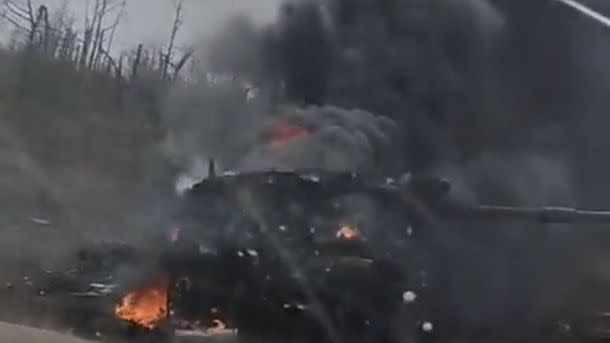
The United Kingdom's Challenger 2 main battle tank is heavier, weirder, and slower than its Western stablemates, the M1 Abrams and Leopard 2. But until this September, it retained a notable distinction—unlike the Abrams and Leopard 2, not one of the famously tough British tanks had been lost to enemy fire in combat.
A new video shows this record met its end a few weeks after Ukraine’s 14 donated Challenger 2s were committed to the Battle of Robotyne, arguably the most lethal battlefield anywhere on the planet at this time.
Footage posted by a Ukrainian ambulance crew negotiating a muddy, cratered road running near Robotyne briefly shows a burning Challenger 2 near the video’s beginning with its distinct turret profile and thermal-jacketed L30 gun visible. Later in the video, a disabled Ukrainian T-64BV tank and two knocked-out Humvee-style trucks are also visible.
#Ukraine: A Ukrainian Challenger 2 tank was destroyed near Robotyne, #Zaporizhzhia Oblast. A damaged T-64BV and two destroyed IMVs can be seen too.
This is the first confirmed loss of this tank in Ukraine and is also the first one ever destroyed by enemy action. pic.twitter.com/hFWkYQ8XSV— 🇺🇦 Ukraine Weapons Tracker (@UAWeapons) September 5, 2023
The shaky video gives a sense of the apocalyptic conditions around Robotyne, strewn with trees and abandoned vehicles shredded by shell fire. The town was recently captured by Ukrainian forces after weeks of battle and then defended against vigorous counterattacks by elements of Russia’s elite 76th Guards Air Assault division. The truck crew are understandably terrified as shellfire explodes close to their vehicle.
Subsequent statements from Ukrainian sources and drone reconnaissance imagery posted by Russian sources confirm the loss, with the latter showing the Challenger 2 situated across from two destroyed BMP-1 fighting vehicles and an M113 APC.
another angle on the destroyed challenger 2 pic.twitter.com/hY2eUzlAL3
— 2S7 pion (trost) (@Trotes936897) September 5, 2023
But despite the Challenger 2 having caught fire, its crew apparently successfully abandoned the tank and survived according to a BBC correspondent.
While modern Western armored vehicles tend to be all-around superior (and heavier and more expensive) compared to their Soviet/Russian counterparts, by far their most important advantage in combat in Ukraine has been a dramatically higher survival rate for crews and passengers of vehicles damaged by enemy fire.
That reflects the much lower importance placed on crew survival in Soviet doctrine, an approach Ukraine can’t sustain given Russia’s over-three-times-greater population. The fact that the turret hasn’t blown off despite all the ammunition stored within the flaming vehicle is also a good sign.
The Challenger 2 in Ukraine
Back in December 2022, London announced it was transferring 14 Challenger 2 tanks to Ukraine—the first Western main battle tanks to enter Ukrainian service. The small quantity—enough to equip a single Western-style tank company—made the donation mostly symbolic.
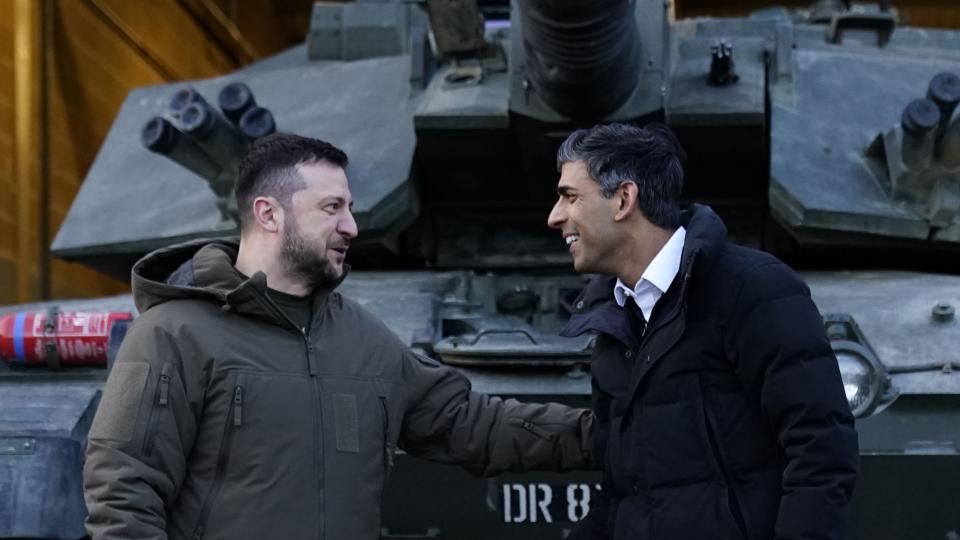
But it was also importantly symbolic because it broke the logjam of reluctance to supply Western-built tanks, leading to the subsequent pledges for at least 165 Leopard 1s, 85 Leopard 2s, and 31 M1 Abrams main battle tanks so far.
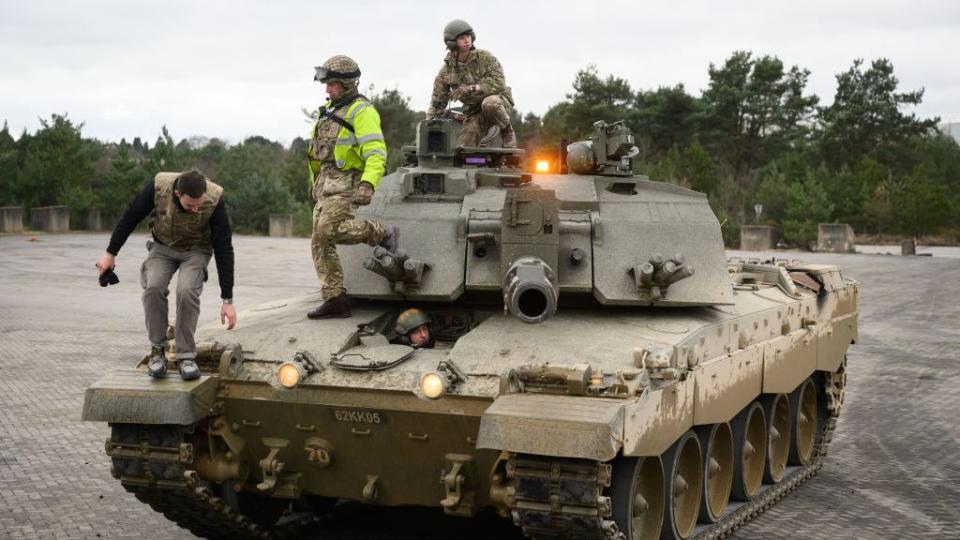
And despite the logistical inefficiencies of operating a microfleet of 14 unique tanks, Ukraine’s airborne forces eagerly went about training and equipping to operate them, forming them into the tank support company of the newly formed 82nd Air Assault Brigade, which also received American Stryker wheeled APCs, German Marder infantry fighting vehicles, and towed M119 105-millimeter howitzers. The U.K. also supplied tank-busting depleted uranium shells for the Challenger 2’s gun, prompting entirely insincere complaints from Moscow, which also deploys depleted uranium ammunition in its tanks.
Though Challenger 2s were first spotted in the field on June 21, the 82nd was held in reserve during the initial phase of the counter offensive before being committed to a roiling battle for Robotyne in mid-August, helping finally break Russian defenses there.
A documentary released by Ukraine late in August implies the Challenger 2s were used in the fighting, presumably from a long distance. Such standoff fire playing a supporting role, rather than leading assaults, is a good way to minimize risks of losing the vehicle.
A crew member with prior combat experience operating the speedy gas-turbine powered T-80 tanks usually attached to Ukrainian Airborne brigades praises the Challenger 2’s ability to precisely engage targets at very long range, making it like a “sniper rifle” compared to the T-80 thanks to its better sight, gun stabilization, and human loader. He also implies the Challenger 2 can be repaired and serviced much easier than Soviet vehicle that “…take half a day to reach a bolt. To cut up a wrench, weld it and readjust it… [The Challenger 2] is made for people.”
"A sniper rifle among tanks" - A Ukrainian tanker shares impressions of using a British Challenger 2 tank in battle. - "We could use a few more companies in Ukraine... russian tanks would be too scared to come out." pic.twitter.com/18tcMMIRuj
— Defense of Ukraine (@DefenceU) September 3, 2023
He further argues the design is better optimized for hunting enemy armored vehicles than Soviet tanks. And its crew is much more likely to survive being hit. “If you are [hit in a Soviet tank], you don’t stand much of a chance; the ammunition immediately detonates and you’re sent flying across the fields.” By comparison, he says ammo storage on a Challenger “can withstand several hits.” In his view, even just a few Challenger 2s deployed at a time can cause “death and horror” to Russian tankers.
The causes of the Challenger 2 loss near Robotyne remain unclear, but Russian artillery zeroed in on this exposed stretch of the road seems the likeliest culprit given what’s seen in the video. Other likely causes could include anti-tank mines, Russian kamikaze drones, or long-range anti-tank missiles fired by helicopter. Attacks from the before-mentioned sources often hit either top or belly armor, which are both much thinner.
It’s also possible that the tank was immobilized by a mine or artillery fire, abandoned by the crew, and then set ablaze by subsequent targeted attacks using laser-guided Krasnopol artillery shells, drone or missile strikes, or (less likely) even scuttled by Ukrainian forces.
Origins of the ‘Indestructible’ Challenger 2
The Challenger 2 emerged as a heavily redesigned successor to the Challenger 1 tank, which in its only combat—the 1991 Gulf War versus Iraq—performed well, destroying around 300 tanks, and executed the longest-range tank kill in history by destroying a T-55 from 3.17 miles way. And none of the 221 Challenger 1s deployed were lost to enemy fire, thanks to its then-advanced Chobham composite armor, also famously girding the American Abrams tank.
The heavier 71-ton Challenger 2 boasted improved Dorchester composite armor and souped up L30 rifled gun optimized for use of squash-head ammunition (HESH), out of step with smoothbore guns optimized for discarding sabot rounds used by virtually everyone else since the 1980s. The beefy Challenger 2 has a crew of four and could tip the scales even more grossly to 83 tons when sporting add-on TES armor.
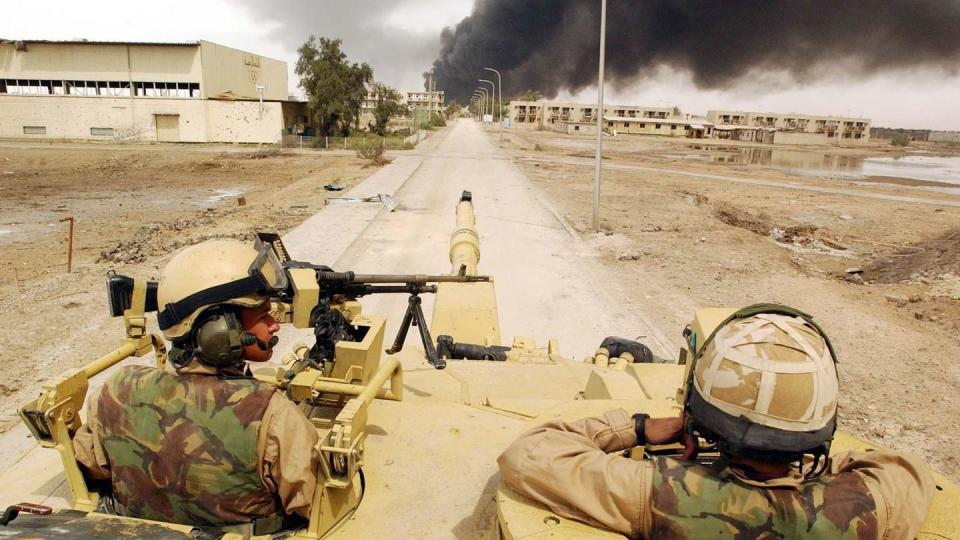
It carried on the Challenger 1’s legacy, when 120 were deployed in the invasion and occupation of Iraq between 2003 and 2007. In one incident, a Challenger 2 ambushed in Basra survived hits from allegedly dozens of rocket propelled grenades without being knocked out. Later on, in two incidents, Challenger 2 crew members were injured by an RPG and a mine blast that struck the belly armor—but virtually no tanks are immune to damage from this quarter.
The only true Challenger 2 kill came from friendly fire from another Challenger 2 tank, which killed two of the crew and set the vehicle ablaze.
But while the Challenger 2 does earn its laurels for enduring years of insurgency in Iraq without total losses to enemy ambushes, truth be told, the best way to ensure a tank never gets destroyed by enemy fire is to build fewer of them and to export them to fewer countries to minimize odds they see combat in additional conflicts. And that was certainly the case for the commercially unsuccessful Challenger 2, only 38 of which were ever exported (to Oman).
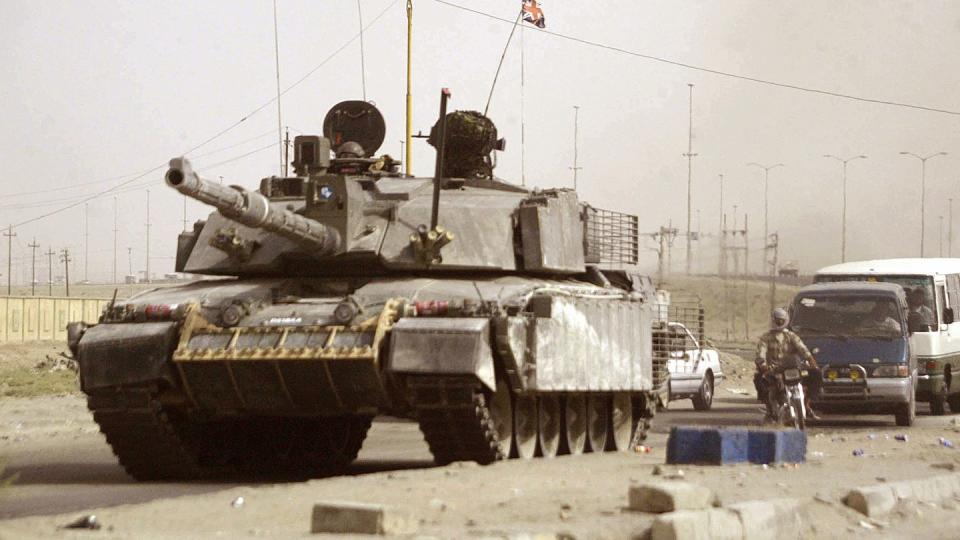
This meant Challenger 2s didn’t see action in subsequent Middle Eastern wars, while Abrams and Leopard 2 tanks used by Iraq, Saudi Arabia, and Turkey suffered losses to missile-armed insurgents, generally under circumstances reflecting poor deployment in exposed areas (or in the case of Iraq, a total collapse in the morale of Iraqi forces garrisoning the city of Mosul).
While understandably disappointing, the fantasy that invincible super tanks can withstand anything should have been dispelled long ago, when Germany’s deployment in World War II of heavily armored Tiger tanks and Jagdtiger tank destroyers (and several other similar 'monster' vehicles) provided abundant evidence to the contrary. Despite front armor nearly impenetrable to most Allied guns when they entered service, such vehicles could still be disabled by mines, air attacks and shots to the thinner top, side or rear armor. Even non-penetrating shots could still disable out guns, sights and tracks, and crews especially could be compelled to abandoned immobilized vehicles.
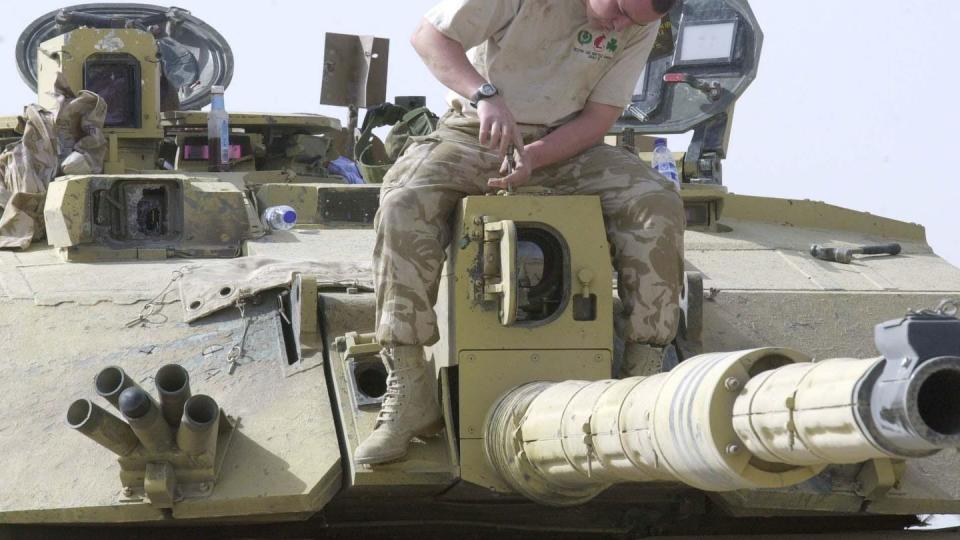
For now, Kyiv is interested in whether the U.K. has the capacity to send additional refurbished Challenger 2s to Ukraine, as London is currently planning to retain only 148 of its 213 remaining Challenger 2s into service. Those 148 will be upgraded to a Challenger 3 configuration 2027-2030 sporting a new turret fitted with a standard Rheinmetall smoothbore 120-millimeter, 55-caliber gun, making it more interoperable with allied Abrams and Leopard 2 units, new sights and digital networking capabilities, and Trophy active-protection systems that can swat down incoming missiles.
Perhaps some of the spare remaining 59 Challenger 2s that won’t be upgraded could still be shunted over Ukraine at the cost of reducing availability of spare parts and hulls to substitute for combat losses. It may also be possible to buy back Challenger 2s sold to Oman.
Likely more have not already been donated, however, due to a shortage of spare parts, with only roughly two-thirds of the Challenger 2 fleet being in useable condition last fall. While too few to enter widespread use, additional Challenger 2 donations could allow Ukraine to form an additional Challenger company or two for its airborne brigades, which are usually at the forefront of the fighting.
The loss of one Challenger 2 is a minor misfortune for Ukraine, but shouldn’t be seen as remarkable or unexpected in a conflict of such scale and violence, and there's no particular reason to believe it reveals some unforeseen defect with the design.
Tanks, even very tough ones, die all the time in wars, even when they are being used well (and very quickly when they aren’t). The remaining Challenger 2s in Ukraine's 82nd brigade seem likely to see much intense fighting ahead of them this Fall in which their superior offensive and defensive capabilities will continue to be of value to Kyiv's counteroffensive.
You Might Also Like

